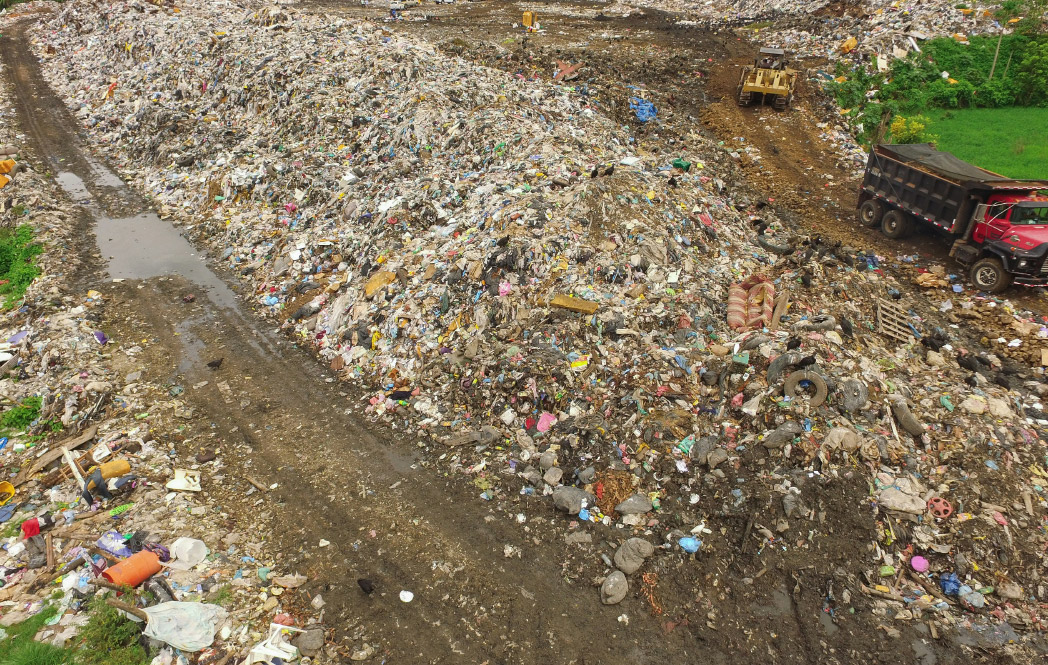According to data from the Ministry for Ecological Transition, 132 million tonnes of waste was produced in Spain in 2017. Of this waste, 31.2% came from industry, 26.7% from construction and demolition (C&D), 17.1% from municipal solid waste (MSW), and the remaining 25% from agriculture and water management. Of this volume, 59.3% (more than 70 million tonnes) ended up in landfill sites.
These landfill sites, depending on the type of waste they hold, can be classified into:
- Solid urban waste landfill sites. Managing MSW from households and the service sector (offices, shops, etc.) is a municipal task. Annual production is around 22.5 million tonnes, of which 36% are recycled, 13% go to incineration, and 51% (about 12 million tonnes) end up in the 116 MSW landfill sites around Spain. Landfill sites owned by local councils, although generally operated under administrative concession by private entities.
- Construction and demolition of waste landfill sites. The National Association for the Recycling of Construction and Demolition Waste reported that, in 2015, 30% of such waste was unmanaged, another 9 million tonnes were recovered, and 5.2 million ended up in landfill sites, usually privately owned.
- Industrial and hazardous waste landfill sites. According to the Association of Special Waste and Resource Management Companies (ASEGRE), Spain counts on one hundred legal plants that manage industrial and hazardous waste, all privately owned. In total, between five and ten have a landfill site. We must also add a further 1,513 unlicensed landfill sites, according to a European Commission report from 2018. Indeed, our country has faced the highest number of fines imposed by the European justice system for irregular facilities over the last three years.

From an environmental perspective, landfill sites, while necessary for waste management, can cause significant environmental damage in the course of normal operations or in accidents, such as in the incident mentioned above.
Their leachates can contaminate the soil as well as the surface and groundwater; their emissions can damage the atmosphere; the collapse of the landfill liner can also cause serious environmental damage, and so forth. That is why they are highly regulated activities. Act 22/2011 on waste and contaminated soils and Royal Decree 1304/2009, which regulates waste disposal in landfill sites, as well as the associated developing regulations, regulate both the construction and operation of these facilities.
These facilities are also included in Annex III of Act 26/2007, on Environmental Liability, meaning they are subject to objective, unlimited environmental liability, in addition to any Civil Liability they may
incur for damage caused to third parties or their property due to contamination of the soil, water or air.
From an insurance standpoint, Article six of Royal Decree 833/1998 mandates that managers of toxic and hazardous waste must secure insurance covering “the deterioration of the altered environment”.
Similarly, landfill sites for all types of waste that receive over 10 tonnes per day or have a total capacity of more than 25,000 tonnes (excluding inert waste landfill sites) are considered priority 2,according to order ARM/1783/2011;they must therefore carry out an environmental risk analysis to determine the financial guarantee limit to be established prior to 23rd October 2019, according to order APM/1040/2017..
From a technical standpoint, underwriting this type of facility requires a certain degree of knowledge about its operation and an ability to analyse a good number of documents, such as the construction project, the environmental risk analysis, the environmental impact study, the annual operation plans, the geotechnical and slope stability studies, the inspection and monitoring documents that must be drafted for the relevant authority, etc., while also conducting recommended facility inspections.
Finally, it should be noted that these essential facilities are highly sensitive in terms of risk and liability and, apart from the intrinsic interest of their insurance, in many cases have a dual regulatory obligation.


0 Comments